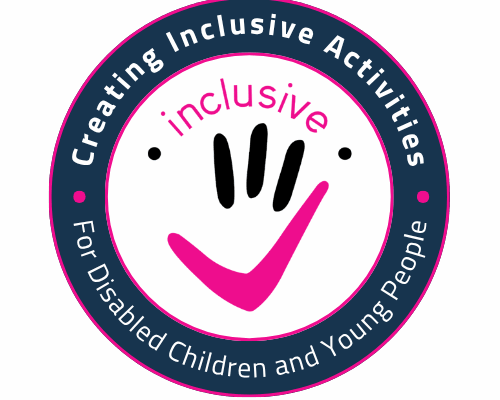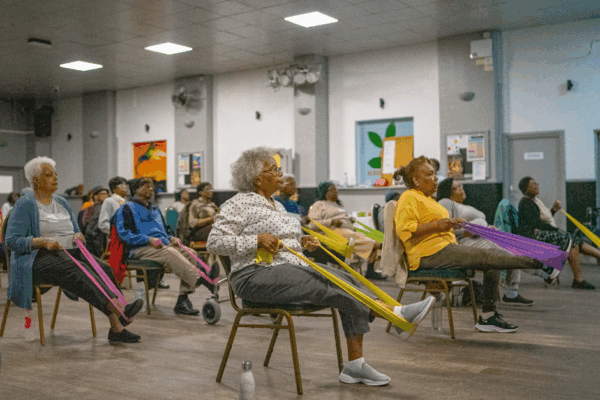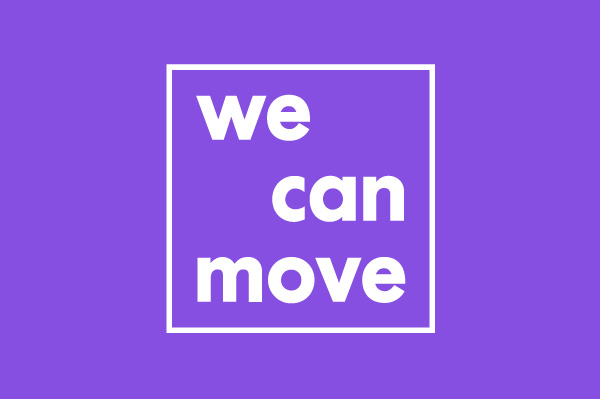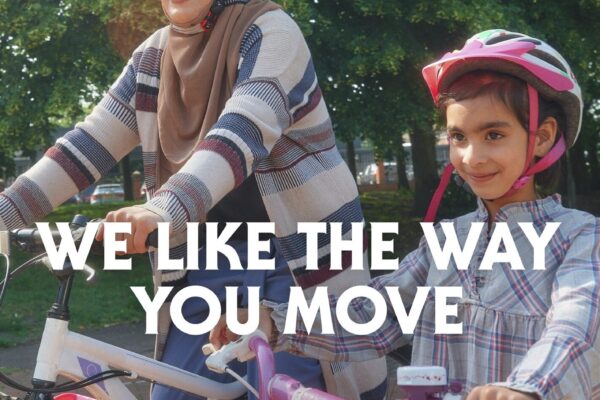How can we make it easier for people with long-terms conditions to explore movement and physical activity?
Something I feel immensely proud about in our county is the diverse range of community activity that we have available and the passion behind each one in enabling older adults and people living with long-term conditions to move more. Yet something we keep getting a little bit stuck on, is our general approach to risk. With such a broad range of people who have the trust, relationships and connections with communities to be the perfect advocates for physical activity, there is still some hesitancy and lack of confidence in approaching conversations and associated recommendations. In addition to this, we know that there are differences in the pathways and mechanisms through which people are either ‘referred’ into activity and/or signposted, with little guidance as to how such pathways should be designed and implemented.
As an exercise professional in a previous life, I firmly believe in the importance of more formal physical activity for health pathways that pair an inactive individual with complex health conditions with a specialist exercise intervention that will safely guide them into activity and provide either effective self-management and/or treatment to manage their condition and its impact. Yet for me, there is always a feeling that if someone has a stable condition and otherwise well, then there should be no barrier to that person being able to access the right activity for them, in the right place and at the right time. Whether that’s taking to the water, going along to a local gym, participating in walking groups, community exercise classes or even joining a community sports club, yes guidance may be needed, and in some cases even adjustments to enable inclusive activity, but the key word for me here is guidance and not clearance.
In 2021 a consensus statement was published on behalf of a Physical Activity Risk Consensus group looking at the risk of physical activity for people with long-term conditions. The consensus statement was designed to help us understand “what healthcare professionals should know before giving advice about risk to people with long-term conditions.” The headline of the consensus statement tells us that “for people living with stable long-term conditions the far-reaching benefits of physical activity outweigh associated risks.” People are fearful of worsening their conditions, and often have lots going on in life so a conversation about just ‘moving more’ isn’t always helpful. The guidance is around using positive, brief, and informative ‘guidance’ to establish a starting point and build motivation. In addition to the five headline messages from Moving Medicine there are eight symptom specific statements to support this.
But we know that this is just a starting point. A movement away from medical clearance that poses an unnecessary barrier to participation and a move to medical guidance is just the beginning. We have been working locally to help activate and land this guidance in the sport and physical activity sector, as well as gently influencing across the local health system so that all sectors can a) advocate for the role of physical activity in health and b) have continuity of advice and support across all aspects of health and social care.
Our work with older adults is a great example of how we are collaborating with diverse partners from health, public health and voluntary sectors as well as people with lived experience to shift the conversation. We recognise and value the need for specialist exercise offers but embrace and support the broader and diverse range of community activities out there for which there should be no barrier for people with stable long-term conditions to access. This of course demands relationships of trust and building confidence in the workforce delivering activity who often have all the skills and more to work in this space. Where we notice gaps in the workforce it’s about understanding those gaps and developing local approaches to upskill people and build confidence and capacity to deliver safe, quality and enjoyable activities for older adults.
As a Community of Practice member for some fantastic work being done by Move Consulting looking at a framework and toolkit for physical activity for health pathways, we are finding out all we can from our local networks so that we can help create the conditions for change. In our rapidly ageing county, it is particularly important for older adults and those living with long-term health conditions to access support to move more often – and in a way that works for them. This project seeks to address this by providing clarity and guidance on how health systems and community-based activity providers can connect and ultimately, make it easier for people to get the help they need to benefit from a more active lifestyle.
Although we have a way to go, we are making good strides towards a county of changemakers who realise the role that movement and physical activity can play in improving the health of some of the least active people in Gloucestershire. We will continue to support and learn from national programmes of work whilst adopting systems approaches locally that will build skill, capacity and confidence across both health and physical activity sectors.




